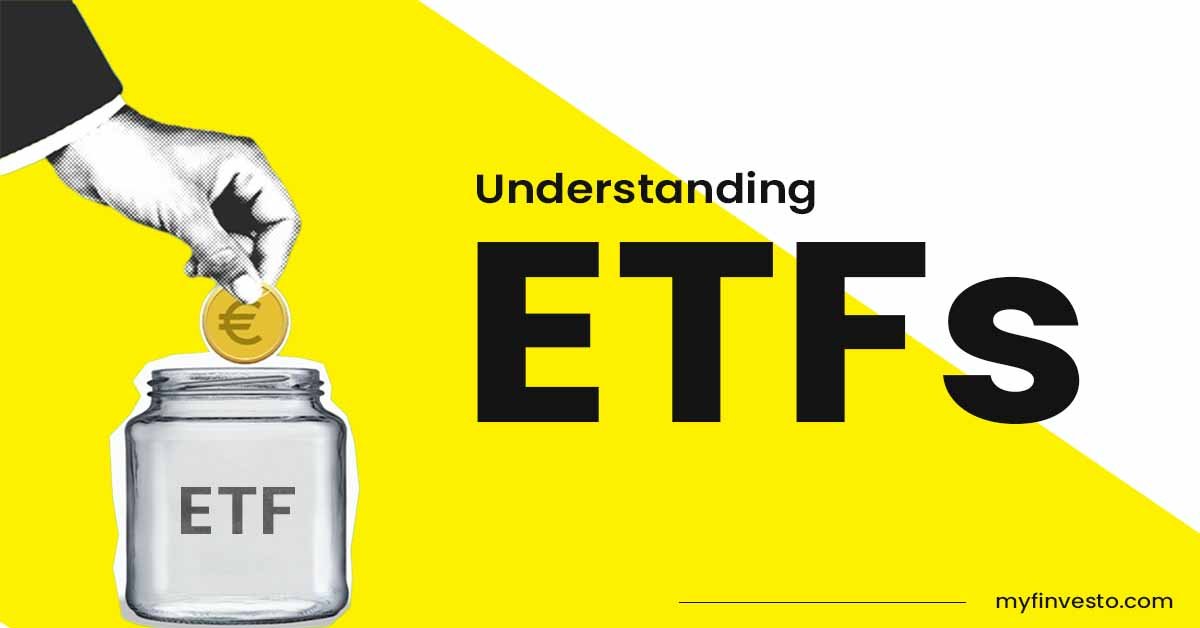Introduction
Exchange Traded Funds, or ETFs, are a popular investment option in the stock market. They combine the characteristics of stock market investments and index funds.
In this blog, we will delve into the details of ETFs, their types, and factors to consider before investing in them.
Equity ETFs
Equity ETFs are a type of ETF that invests in the stock market indexes, such as Nifty, Sensex, Nifty Next 50, and more. These ETFs track the performance of the respective index and provide investors with the opportunity to gain exposure to a diversified portfolio of stocks. One of the key advantages of equity ETFs is their low expense ratio, which is typically around 0.1%.
Debt ETFs
Debt ETFs, as the name suggests, invest in corporate bonds issued by private companies. These ETFs provide investors with the opportunity to invest in fixed-income securities and benefit from the interest income generated by the bonds. The expense ratio of debt ETFs is slightly higher than equity ETFs, usually ranging from 0.1% to 0.3%.
Commodity ETFs
Commodity ETFs invest in commodities like gold, silver, oil, and more. These ETFs allow investors to gain exposure to the price movements of the underlying commodities without physically owning them. Gold ETFs, for example, provide investors with a convenient way to invest in gold. The expense ratio of commodity ETFs is relatively higher, usually ranging from 0.5% to 1%.
Also, read – All about fixed deposits
Growth of the ETF Market in India
The ETF market in India has experienced significant growth over the years. In 2009, the market grew by 51%, primarily driven by the increasing investments in gold ETFs. During this period, gold ETFs gained popularity as investors sought the safety of gold during the recession. In 2013, 88% of the total investments in gold were made through gold ETFs.
Since then, the ETF market in India has witnessed the launch of various new ETFs. In 2019, the government launched the Bharat Bond ETF and the EPFO (Employer Provident Fund Organization) introduced the NPS (National Pension Scheme) ETF. These initiatives have further fueled the growth of the ETF market.
As of 2021, the total valuation of the Indian ETF market has reached a staggering ₹2.9 lakh crore, a 20-fold increase from 2015. This exponential growth can be attributed to various factors, which we will discuss next.
Factors to Consider Before Investing in ETFs
Expense Ratio
The expense ratio of an ETF is an important factor to consider before investing. It represents the annual operating expenses as a percentage of the total assets under management. Generally, lower expense ratios are preferred as they result in higher returns for investors. Equity ETFs have the lowest expense ratio, followed by debt ETFs and commodity ETFs.
Daily Traded Volume
Daily traded volume refers to the number of ETF units bought and sold on a daily basis. Higher traded volumes indicate better liquidity, which is crucial for investors. Liquidity ensures that investors can easily buy or sell ETF units without affecting the market price significantly.
Tracking Error
Tracking error measures the deviation of an ETF’s performance from its benchmark index. A lower tracking error indicates that the ETF closely tracks the index, resulting in better returns for investors. Investors should consider the tracking error before investing in an ETF to ensure that it effectively replicates the performance of the index.
Tax Implications
Investing in ETFs also has tax implications. The tax treatment varies based on the holding period and the type of ETF.
- Equity ETFs: If an equity ETF is held for less than one year, a short-term capital gains tax of 15% is applicable. For long-term holdings, that exceed one year, a lower tax rate of 10% is applicable. However, indexation benefit is not available for equity ETFs.
- Debt ETFs: Debt ETFs held for less than three years are subject to the income tax slab rate, which can go up to 20%. For long-term holdings of more than three years, the tax rate is 20%.
- Gold ETFs: Gold ETFs held for more than three years are subject to a 20% tax rate. Short-term holdings are taxed at the income tax slab rate, which can go up to 20%.
Investors should carefully consider these tax implications before making investment decisions in ETFs.
Conclusion
ETFs provide investors with a unique investment option that combines the features of stock market investments and index funds. They offer diversification, low expense ratios, and the opportunity to invest in various asset classes. Before investing in ETFs, it is essential to consider factors such as expense ratio, daily traded volume, tracking error, and tax implications. By understanding these aspects, investors can make informed investment decisions and potentially benefit from the growth of the ETF market in India.
Disclaimer: The information provided in this blog is for educational purposes only and should not be considered financial advice. Investing in ETFs involves risks, and investors should conduct thorough research and seek professional guidance before making any investment decisions.
Thank you for reading!
